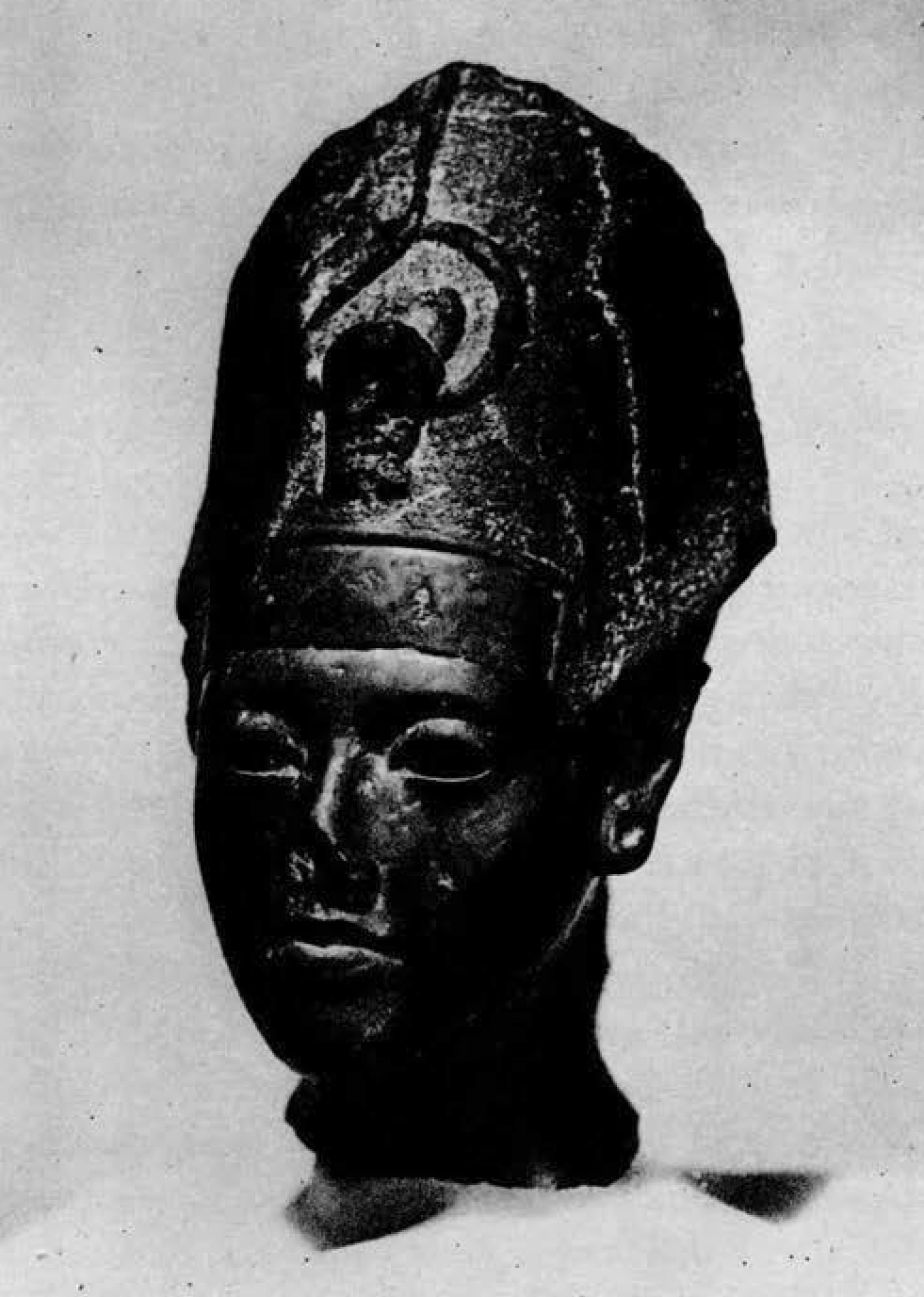
Museum Object Number: E14364
Image Number: 31174
THE small red porphyry head of of Akhenaten (1375-1358 B.C.) here illustrated [Plate XIII] is one of the greatest treasures in the Museum’s Egyptian collection and and is quite equal to the best portrait heads of the king known elsewhere. The head, six and three quarters inches high, once formed part of a statuette, and represents Akhenaten wearing the battle helmet with the uraeus attached. The portrait shows the very high, narrow, receding forehead, the large straight nose, full mouth and prominent chin characteristics of other well known portraits of this religious iconoclast, in whose veins ran royal Syrian blood mixed with the Egyptian. The superb modelling of the face is a striking example of the naturalistic style that characterizes all art of the period of Akhenaten, when the stiff conventionalities of classic Egyptian art were discarded with the dogmas of the old religion, under the impulse of a renaissance of freedom in art and in philosophy.
It is interesting to note that while mounting the head for exhibition, the museum craftsman could not succeed in piercing the tiniest hole in the base of the neck, even with a steel drill, so hard is the stone, yet the Egyptian craftsman of three thousand years ago, working only with tools of stone and bronze, could model it so delicately and so craftily as to produce a portrait worthy to rank with the best of any nation then or now.

